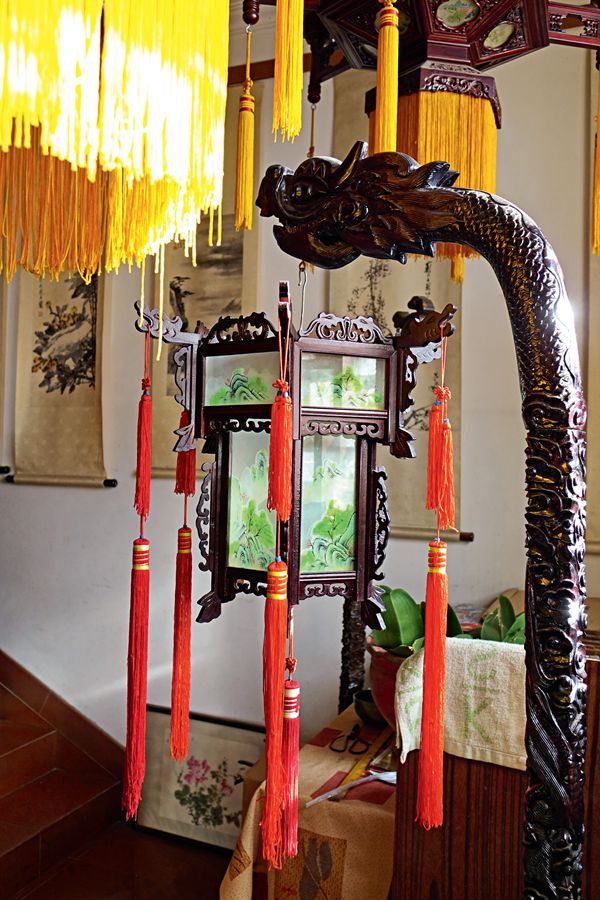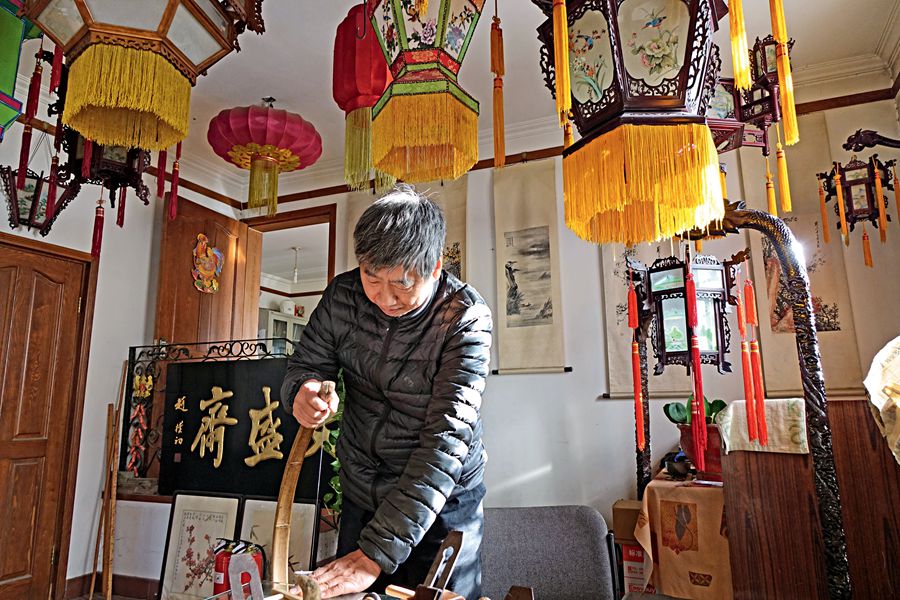THE Palace Lantern, as its name indicates, originated in the imperial palace. It was widely loved by the populace after relocation from the confines of the emperor’s residence and made accessible to the public.
A perfect marriage between lighting and art, the Chinese lantern has both highly practical and aesthetic values. It is an emblematic decoration on traditional architecture and an important element of Chinese decoration art as well a token of the Chinese culture. Back in 1915, a Beijing-styled Palace Lantern won a gold medal at the Panama Pacific International Exposition.
A Millennia-Old Palace Art
According to historical records, the Palace Lantern first appeared in the early years of the Eastern Han Dynasty (25-220). It’s said that after unifying the country, Eastern Han Emperor Liu Xiu held a grand celebration in his palace in the capital city Luo-yang, lighting it up with rows upon rows of lanterns. Hence the Palace lantern got its name. By the time of the Sui (581-618) and Tang (618-907) dynasties, the royal tradition of watching lanterns had been shared by the public. On the 15th day of the first lunar month every year, after having yuanxiao (dumplings made of glutinous rice and sweet stuffing), people flocked to lantern shows in the town. This day, also known as the Yuanxiao Festival, is therefore called the Lantern Festival.

A hexagonal Palace Lantern.
The lantern making craftsmanship reached its pinnacle in the Ming (1368-1644) and Qing (1644-1911) dynasties. The lanterns for the use of the royal family were not only used for lighting, but also as interior decorations. They were therefore meticulously manufactured and lavishly adorned to showcase the magnificence and extravagance of the royal lifestyle. After Ming Emperor Zhu Di moved the capital city to Beijing, he mobilized craftspersons from all over the country to make lanterns for his residence, many of which were wood-framed and of various designs. During the Qing Dynasty the Imperial Household Department, which served the personal needs of the monarch, ran a special section for making and repairing lanterns. At the end of every year, the Qing ruler handed out awards to his officials, among which was also the Palace Lantern.
Before the Imperial Household Department set up the lantern section, lanterns used in the Forbidden City were purchased on the market or from regional governments as tributes. Even after the establishment of the section, many imperial lanterns were still outsourced from private manufacturers. That’s why later they were also available on the market, and thus exerted influence on the design of civilian lamps.
Palace Lanterns in the collection of the Palace Museum in Beijing are mostly wood- or metal-framed, covered in gauze or glass, and painted with various motifs. The majority are in square, hexagonal, octagonal, and some in spherical shape. A lantern consists of two sections chained together, with the upper part called the “cap” and the lower part the “body.” The body is also of two layers, each dotted with several “windows” for letting out light.
A Hundred Procedures to Manufacture
As the capital of both Ming and Qing dynasties, Beijing was once home to a number of the country’s best lantern makers. The Beijing Fine Arts Red Lantern Factory evolved from the Wenshengzhai studio, whose founder Han Zixing was one of those commissioned to make lanterns in the Forbidden City.
Zhai Yuliang has been working in the factory since the 1970s. The hallmarks of Beijing lanterns include a wooden frame, painted windows, tassels, and Chinese knots. The representative shape is hexagonal, as was the one that won a gold medal at the Panama Pacific International Exposition.
It was the rule in feudal times that objects for the use of commoners could not be of the same design as those preserved for the emperor. Therefore the Palace Lanterns for the use of citizens came without the “cap” to distinguish them from those in the Forbidden City. “Our products are still cap-less, but now more out of consideration of functionality. Lanterns with caps need greater space, but modern residential buildings don’t have the required high ceilings,” Zhai said.
Today the Beijing Palace Lantern is still totally handmade throughout the 100-plus procedures including wood carving, lacquer painting, weaving, polishing, and installation of the cover. Showing the reporter a half-meter-tall hexagonal lantern, Zhai said, “A Palace Lantern primarily consists of the frame and panels. This one has more than 100 wooden parts of tenon-and-mortise work. They are interlocked with each other without a single nail or glue, which demands high precision. A lantern of this structure is delicate and durable. What’s more, it can be folded to fit into a small space for storage or transport.”
Every Palace Lantern is a fine work of art, with luxuriant carvings on the wooden frame, lively painted landscapes, flowers, animals, and human figures on the silk or glass shell, and exquisite, hand-plaited fringes. The production of a lantern of the average size and design takes more than one month, with the larger ones requiring even more time.

Zhai Yuliang makes a Beijing Palace Lantern in his workshop.
The Beijing Palace Lantern was named an intangible cultural heritage item of the city in 2007.
Ancient Craft in Modern Times
The current staff of the Beijing Fine Arts Red Lantern Factory is smaller than that in its peak time, but the demand for Palace Lanterns remains strong. “The Palace Lantern is a key part of traditional Chinese architecture. There is the need for it on renovated ancient buildings as well as newly built ones of the traditional style,” said Zhai.
Zhai and his colleagues are open to innovations on the design according to customers’ needs. They even made a lantern four meters in diameter for a hotel’s three-story-high lobby. To make a lantern this large as well as flame retardant, they used an alloy for the frame instead of the usual wood. “There are no fixed rules for the making of the Beijing Palace Lantern. We have been continuously introducing new designs by making changes to the old ones,” Zhai explained.
In this spirit, the factory has rolled out lanterns of unconventional shapes that borrow from elements of ethnic minorities and Western aesthetics. “All designs are conceived by designers. The craftspersons are both the makers and the designers. They adjust the design whenever a problem is detected. This is the only way to make the lantern art long-lived.”
With the revival of traditional culture in China, many primary and middle schools are inviting Zhai and his colleagues to give lectures, and teach students to make miniature lanterns. He was glad to see the interest shown by young children. “What’s craftsmanship? It’s maintaining inner peace, enduring loneliness, and remaining seated for long to work on a product. I hope more youngsters will love the Beijing Palace Lantern, and pass down this craft,” Zhai concluded.

